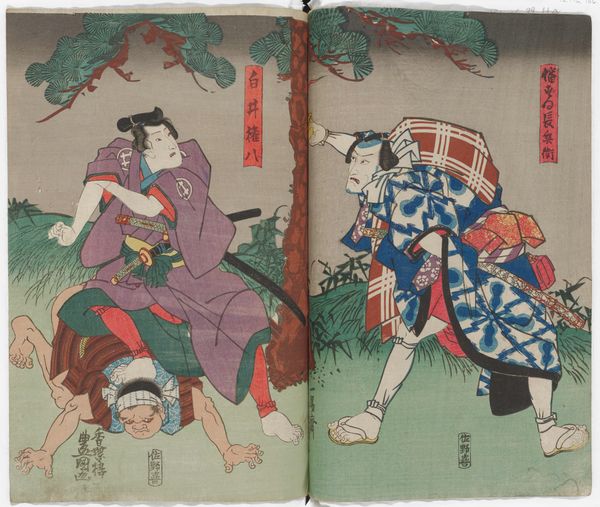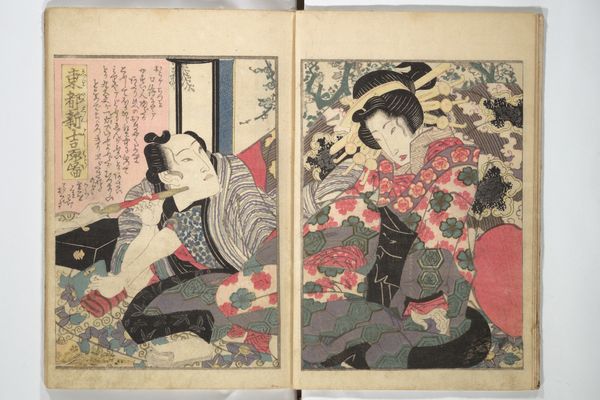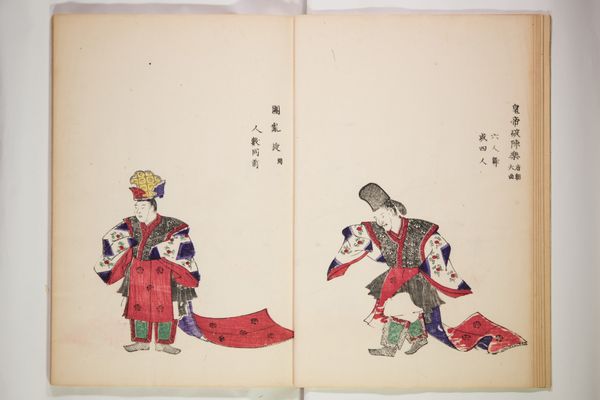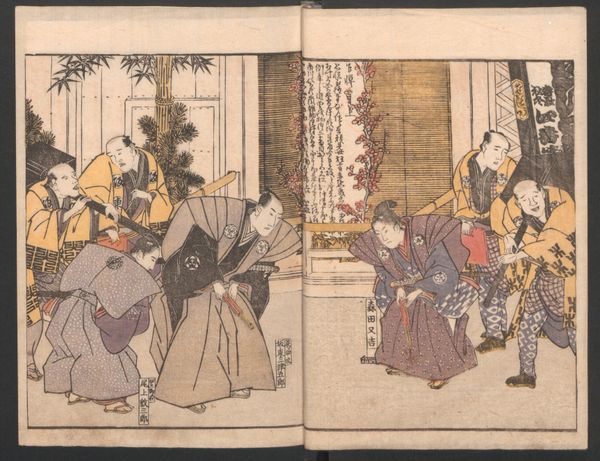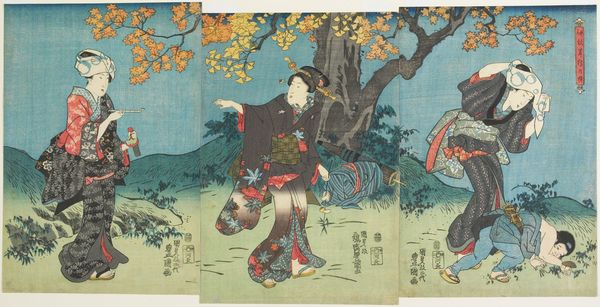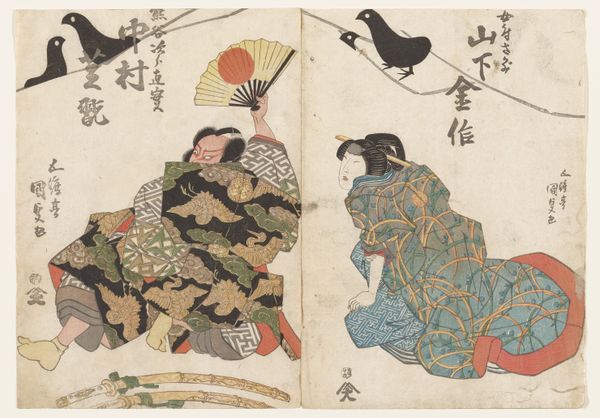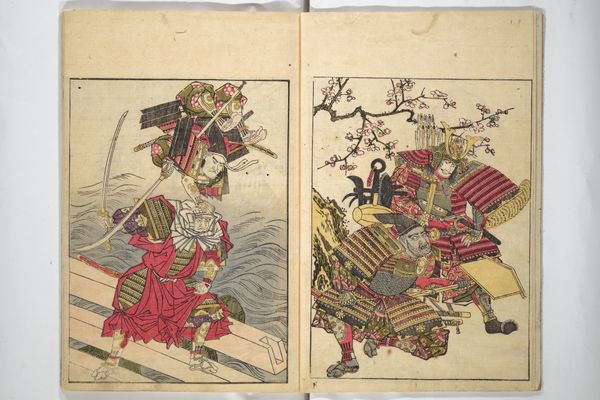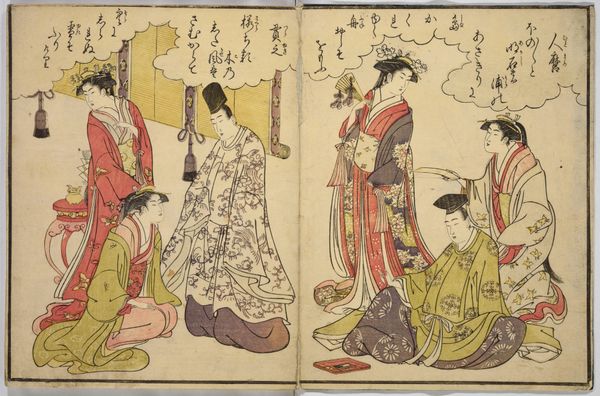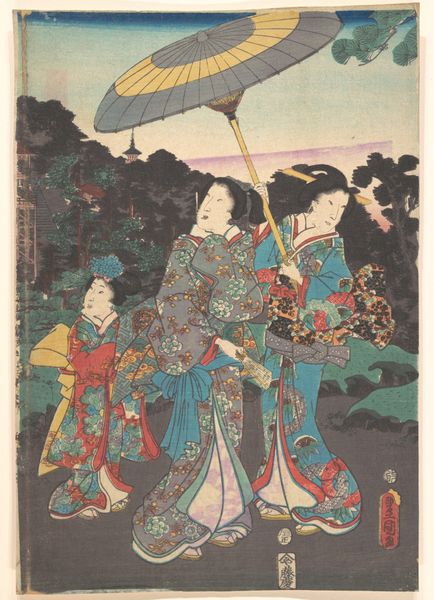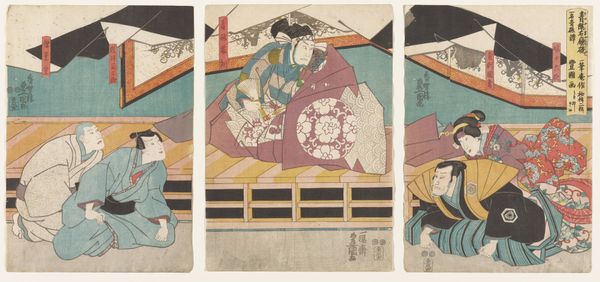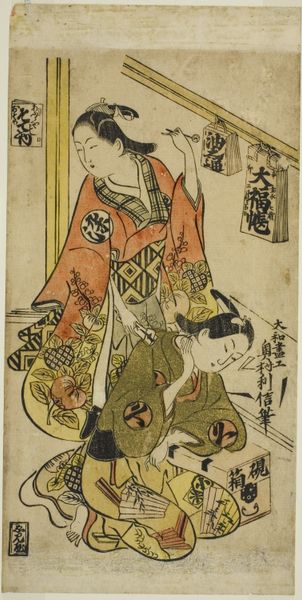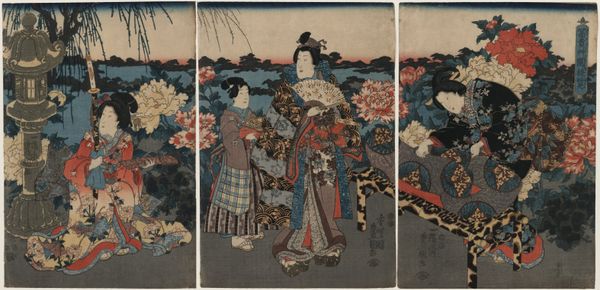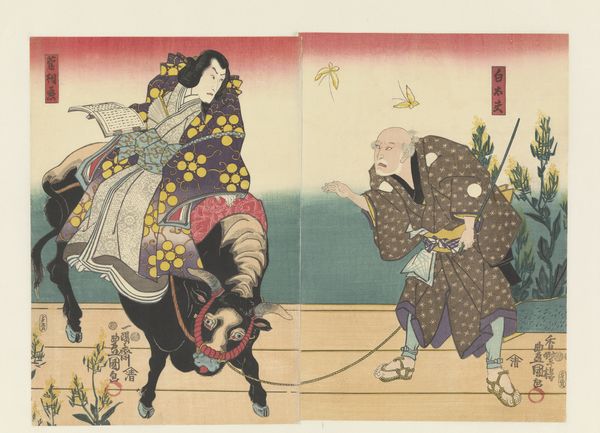
Picture Book of Evergreens Possibly 1731 - 1738
0:00
0:00
print, ink, woodblock-print
#
ink painting
# print
#
book
#
asian-art
#
ukiyo-e
#
japan
#
figuration
#
ink
#
woodblock-print
#
genre-painting
Dimensions: 5/16 x 7 5/16 x 10 13/16 in. (0.8 x 18.5 x 27.4 cm)
Copyright: Public Domain
Editor: Here we have Nishikawa Sukenobu’s "Picture Book of Evergreens," likely created between 1731 and 1738. It’s an ink and woodblock print showcasing two figures within facing pages of a book. I’m really drawn to the detailed patterns on their kimonos – they almost seem to tell a story on their own. How do you interpret this work, focusing on its visual aspects? Curator: Initially, let us address the inherent structure. Notice the bilateral symmetry imposed by the book format, and then see how the artist both echoes and disrupts this regularity. The figures mirror each other, yet their placement and gestures create distinct compositional rhythms on each page. Observe also the contrast of curvilinear and rectilinear elements – the flowing kimonos against the architectural lines of the backdrop. Editor: That's a good point. The curves and lines definitely guide your eye. I also noticed the use of negative space - the expanse of white around the figures. What purpose do you think that serves? Curator: Precisely. The strategic deployment of negative space intensifies the figure-ground relationship, elevating the prominence of line and color. It isolates the forms, and directs attention to the meticulously rendered patterns upon them, and to the delicate lines. Without these, we may lose sight of Sukenobu's artistic decisions. The flat planes invite our perception to fill the voids in accordance with Gestaltian principles, inviting viewer participation in image completion. Editor: That makes perfect sense. I didn't realize how much the composition itself influenced my understanding. Curator: Yes, stripping away any representational intent and seeing only the interplay of form, line, color, and space, permits a deeper appreciation of the artistry at play. It offers, in itself, a complex visual encounter, would you agree? Editor: I would definitely agree! Seeing the composition with these fundamental design elements in mind reveals the artistry on display, and allows for other interpretations.
Comments
No comments
Be the first to comment and join the conversation on the ultimate creative platform.
